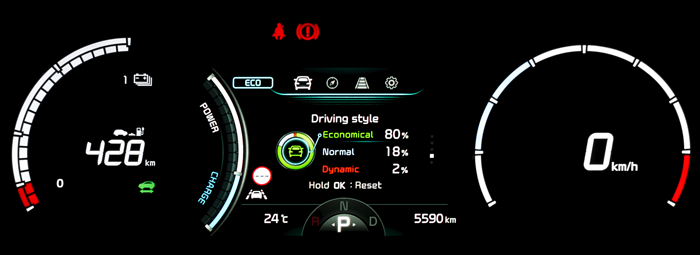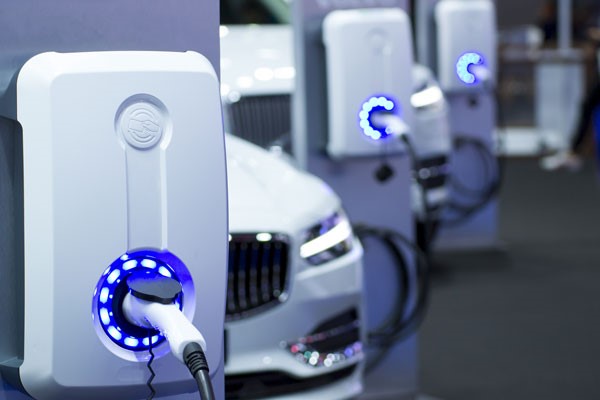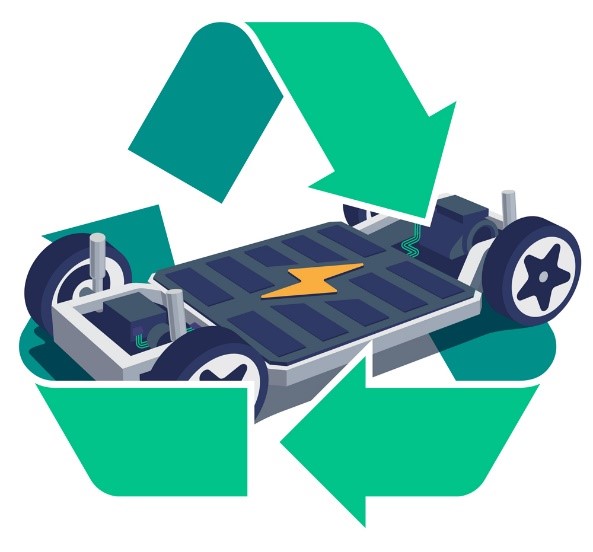Overview
Although the electric vehicle (EV) market is accelerating rapidly and virtually all automotive manufacturers are transitioning their fleets to EV offerings, there are still some key challenges that continue to impede widespread adoption.
This article provides an overview of five key challenges related to battery technology that are impeding the adoption of EVs. (Note: follow-on updates will drill down deeper into each area.)
As discussed in the following sections, the five key EV adoption challenges are:
- “Range Anxiety” regarding the distance that can be traveled per battery charge
- Lack of a widespread charging infrastructure
- High upfront costs for EVs, batteries and home charging systems
- Concerns about EV resale prospects and battery reuse or recycling processes
- Increased EV charging demand is stressing existing electrical grids
Range Anxiety Regarding Travel Distance per Battery Charge
According to a J.D. Power report on EV ownership, range is the most important factor in customer satisfaction. The report says, “When deciding which electric vehicle to buy, the most-often-cited factor in the purchase decision is battery and driving range.” Even after the purchase, “accuracy of the stated battery range and actual battery range accounts for 20% of owners’ overall satisfaction.”
Energy capacity is measured in kilowatt-hours (kWh), which defines the battery’s ability to deliver a set power output (kilowatts) over a period of time (hours). At highway speeds, most EVs only need about 20-30 kilowatts to move at a steady speed so, depending on the situation, a 60-kWh battery could enable about three hours of driving. Of course, factors such as speed, temperature and other driving conditions can impact the rate of battery usage.

According to Kelly Blue Book the top 10 longest-range electric cars in 2022 are led by the Lucid Air Dream Edition with a stated range of 520 miles per charge on a 118-kWh battery, followed by the Tesla Model S at 405 miles per charge on a 100-kWh battery. On the smaller end of the spectrum are EVs such as the Mini Cooper SE with a range of 110 miles per charge on a 28.9-kWh battery.
Other factors that can impact an EV’s battery life are weather, battery age and charge capacity. From a weather standpoint, very low ambient temperatures can negatively affect a battery’s ability to hold a charge. In addition, hot or cold conditions typically mean more use of cabin climate controls, which draws down battery power to keep passengers comfortable. As an EV battery ages, it loses some of its maximum charge potential, however, the degradation is slow (about 2.3% per year) and with federally mandated eight-year, 100,000-mile battery warranties, EV batteries can be expected to perform well over time.
Charge capacity is likely the factor that drivers most need to understand because automakers intentionally use complex battery systems that limit maximum charging capacity in order to prolong overall battery life. Typically, rapid charging stations can quickly bring an EV up to 80% charge in as little as 30 minutes, but it is not advised to regularly charge to 100%. From an expected driving range standpoint, drivers need to keep this charging limit in mind to effectively plan their recharging stops.
Lack of Widespread Charging Infrastructure
Although significant ongoing investment by governments and EV manufacturers is aimed at building out networks of recharging stations, universal availability is a long way off, especially in rural areas beyond population centers or well-traveled highways.

According to the U.S. Department of Energy’s Alternative Fuels Data Center, the number of public charging stations nationwide increased by 58% from 2020 to 2021, but the total of 50,054 stations with 128,474 charging outlets is still far fewer than the approximately 150,000 gas stations with 6 to 12 pumps per station. In addition, because it takes significantly longer to charge an EV than to fill an internal combustion engine (ICE) vehicle’s gas tank, even if the availability ratios were the same, there is a high likelihood that other EVs may already occupy most of the available charging stalls.
It is important to keep in mind that most EVs also are recharged via the owners’ home electrical system, with an overnight charge routinely bringing the battery to full capacity. For many consumers with typical daily commutes, this overnight charging is sufficient to support their normal routines. However, charging at home can be more complex in situations where the consumer does not have their own garage or driveway, such as multi-tenant buildings where lack of sufficient shared charging stations can be a deterrent for EV adoption.
High Upfront Costs
The significant cost gap between EVs and conventional ICE vehicles is perhaps the major impediment that prevents many consumers from making the switch to electric vehicles. According to Kelly Blue Book, the cost for EVs in 2021 was about $10,000 higher than the industry average for all types of vehicles. In many situations, government subsidies make up for a large part of this gap, such as the U.S. federal EV tax credit of up to $7,500 and incentives in the majority of EU countries.
For consumers who want to charge their EVs at home, there is also the cost of installing a private charging system. This can be around $2,000 for a Level 2, 240-volt outlet to provide 5 to 6 times faster overnight charging than a standard 12-volt outlet.
Batteries constitute the largest cost factor in most EVs. According to CNBC news service, today’s battery costs of $128 per kWh are expected to drop to $110 per kWh next year and then surge by 22% from 2023 through 2026, peaking at about $138 kWh. After the peak, costs are expected to steadily decline through 2031 to a low of around $90 per kWh. The near-term cost reduction is based on volume production improvements and the longer-term spike and drop are based on predicted scarcity and fluctuations in the cost and availability of rare earth materials such as lithium.
One trend that may help mitigate the upfront price shock is a move toward purchasing EVs but leasing the batteries over a period of time. This “battery-as-a-service” concept is discussed more in the next section.
Ultimately, the long-term savings from EVs provide the primary motivation for individual consumers’ purchasing decisions (in addition to the global benefits of mitigating climate change). A Consumer Reports Study showed that EV drivers spend about 60 percent less per year on fuel costs than drivers of gas-powered ICEs.
Concerns About EV Resale and Battery Reuse or Recycling
Although accurate EV resale data is still being developed for the relatively new secondary EV market, preliminary information indicates that over the past decade, EVs have not retained value as well as ICE vehicles.

However, according to Automotive Fleet, “the tide is beginning to turn as experts say EVs have reached ‘near parity’ with their gas-powered counterparts… As improvements to battery range and performance continue, charging infrastructures expand, new model choices evolve, the market for new EVs will grow and in turn so will the secondhand market. As new EVs improve and turn over, used EVs will depreciate less.”
According to UK’s Sky News, there is also likely to be an upswing in the number of EVs being offered in the second-hand market. This is based on the prediction that commercial fleets, such as taxi, ride-share, and delivery companies that bought many EVs starting in 2019 will begin refreshing their fleets and selling off used EVs.
Here again, battery technologies play a crucial role in the resale, reuse, and recycling equation. A number of battery maintenance and refurbishment companies have arisen to address these issues, both by extending the life of batteries in EVs and reusing or recycling dead EV batteries.
It is critical to institute global practices for keeping EV batteries out of the waste stream. Lithium-ion batteries, like other electronics, are toxic and potentially dangerous. They can even cause destructive fires that can spread rapidly, especially if many used batteries are stored together. In addition, establishing disciplined recycling practices can help reduce the costs of future EVs by mitigating some of the need for mining new rare earth materials like lithium.
As mentioned above, the emergence of battery leasing options can offer multiple benefits of reducing upfront EV costs, extending EV life spans, boosting resale value, and minimizing waste. Battery-as-a-Service models in some cases also can help extend driving range by providing quick battery swap out services that are faster than charging processes.
Increased EV Charging Demand is Stressing Electrical Grids

The fifth challenge to widespread EV adoption revolves around the secondary impacts of EV charging on existing electrical grids. While there has been a lot of anti-EV hype about how existing grids cannot support a full transition to EV charging, the scenarios most often include unrealistic assumptions such as predicting what could happen if all existing ICE vehicles were turned into EVs overnight. According to Forbes, “If all US cars were EVs, they would need a total of 1,106.6TWh, which is 27.6% of what the American grid produced in 2020.”
However, common sense scenarios by most experts instead point to likelihood of a more gradual transition to EVs over a number of years. Some even point to previous widespread transitions, such as how the electrical grid adapted to the rise of air-conditioning usage over a couple of decades.
Other important factors are the development of smart-charging and two-way charging capabilities. Smart charging systems can enable consumers to automatically take advantage of lower cost electricity rates for off-peak charging, such as in the middle of the night when grid demand is lower.
In addition, two-way charging enables EVs to serve as electricity storage that can actually send energy into the grids during peak demands or can power the owners’ homes during an outage. Since conventional electricity grids have never included in-grid storage capabilities, they have always depended on boosting power plant output to handle peaks.
With fossil fuels traditionally used in most power plants, boosting output for peaks has been highly polluting as well as inefficient. Therefore, the widespread adoption of EVs is viewed by most experts as ultimately providing benefits to existing power grids rather than spelling doom. Combined with the ongoing transition to greater usage of renewable energy generation, the shift to EVs will help make power grids both greener and more resilient.
Summary
Although the five challenges identified in this article need to be addressed to enable widespread adoption of EVs, the global commitment to transitioning away from fossil fuels combined with continuing technological innovation makes it clear that mitigation efforts are well underway.
As a long-time innovator and trusted supplier to the automotive, transportation and energy industries, ENNOVI has played a key role in developing underlying technologies to enable widespread adoption of EVs.
Some of the key technology areas include:
- Efficient batteries
- Motors, stators, and interfaces
- Power distribution modules and systems
- Advanced assembly processes
Among the specific ENNOVI technologies are:
- ENNOVI Cell-PLX™ battery interconnect system that enables flexible design and production of robust EV battery modules.
- Highly configurable BusMate® power interconnects for power modules, motor interfaces, etc.
- Precision Bipolar Plate technologies that form the heart of advanced Fuel Cells that can be used for larger transportation vehicles, fleets, and power generation within grids.
- End-to-end design concepts, engineering inputs, prototyping, and full volume production.
ENNOVI is a highly committed, global participant in the efforts to achieve sustainable e-Mobility goals and plays a key, forward-looking role to help industry partners and the general public understand the stakes, tradeoffs, and opportunities that exist across the whole spectrum of sustainable solutions.
For more information about solutions for next-gen EVs, visit ENNOVI at www.ennovi.com or drop us an email at communications@ennovi.com.
